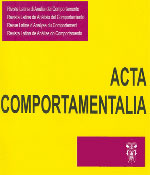Problem solving and Contingencies Description: Effects of Instructions Accuracy in Successive Tasks
DOI:
https://doi.org/10.32870/ac.v10i1.14623Keywords:
problem-solving, rule- governed behavior, instruction accuracy, instructional history, reinforcement contingencies, say-doAbstract
This experiment investigated the effects of instruction accuracy in successive tasks upon solving problem and contingency description. Forty-nine university students participated being exposed to two problem solving situations. In Problem 1, 25 of them received a general instruction (which did not specify the solution), whereas other 24 received the correct instruction (which specified part of the solution), or an opposite (which specified the opposite of the solution) instruction in Problem 2. Compared to the general instruction, the correct solution facilitated performance in Problem 1, although it did not facilitate contingency description. The opposite instruction facilitated performance when compared to the general and partial instruction in Problem 2, although it did not facilitate contingency description. These results corroborate those obtained in previous experiments, as they suggest that discrepant instruction may increase the influence of programmed contingencies by decreasing the probability of instruction-following behavior.
Downloads
Downloads
How to Cite
Issue
Section
License

<a rel="license" href="http://creativecommons.org/licenses/by-nc-sa/4.0/"><img alt="Licencia de Creative Commons" style="border-width:0" src="https://i.creativecommons.org/l/by-nc-sa/4.0/88x31.png" /></a><br />Este obra está bajo una <a rel="license" href="http://creativecommons.org/licenses/by-nc-sa/4.0/">licencia de Creative Commons Reconocimiento-NoComercial-CompartirIgual 4.0 Internacional</a>.






